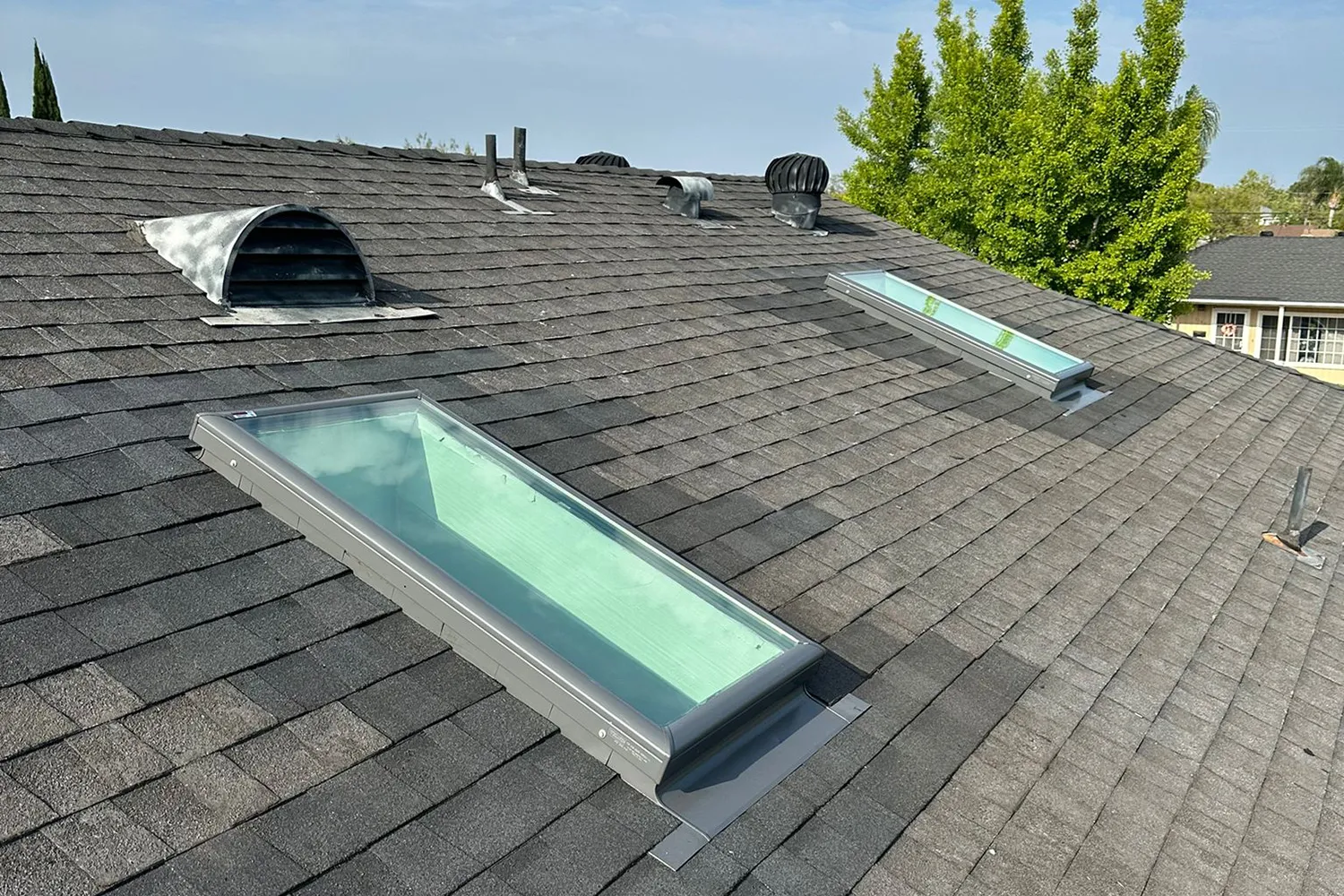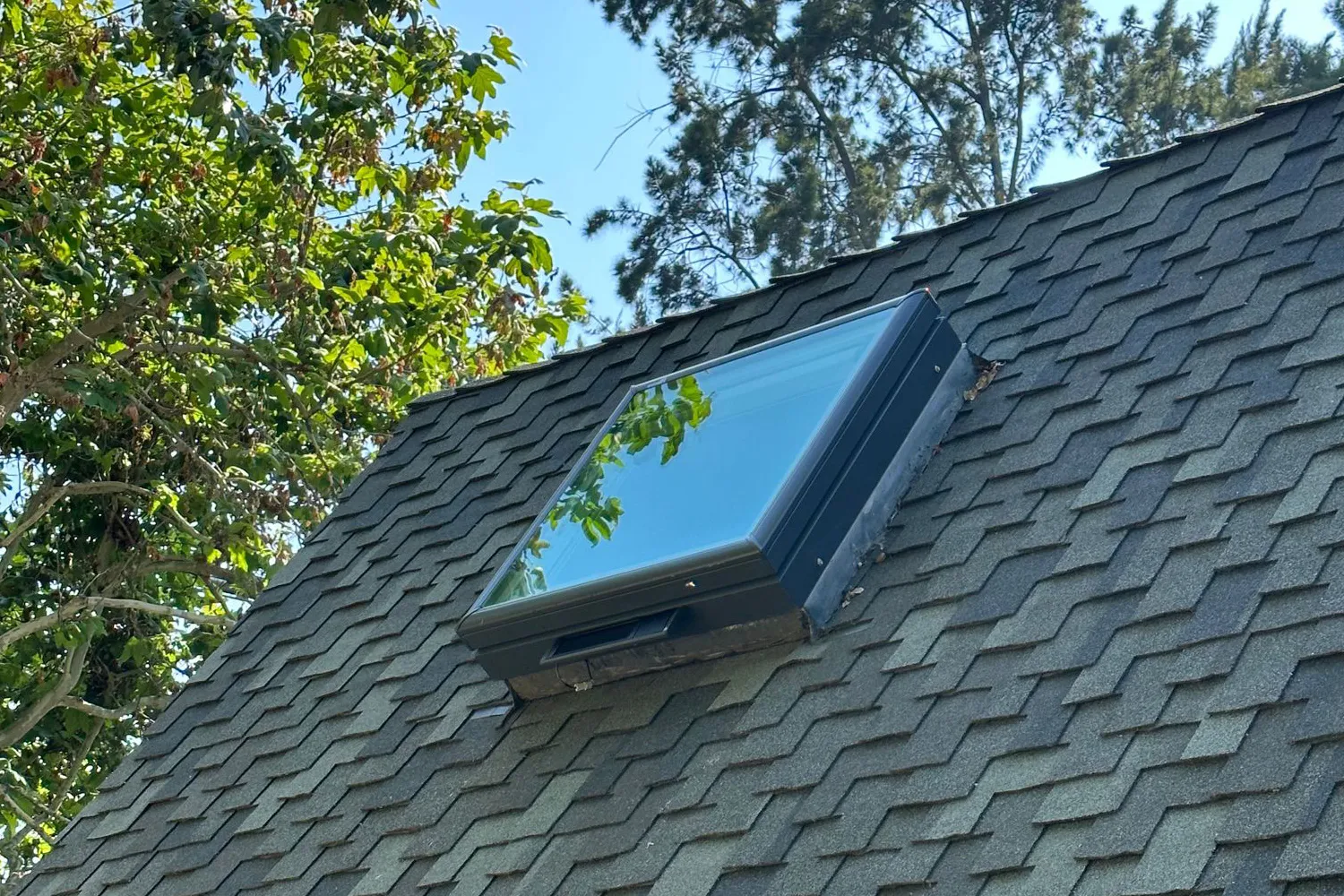Skylights and Air Conditioners: Can One Replace the Other?
At first glance, skylights are charming windows built into the roof, while air conditioning remains one of the most effective ways to cool a space. It might seem strange to compare them, as they serve different purposes: one brings in natural light, and the other pushes out hot air. But both influence the comfort of your living space.
In California, where sunshine is nearly constant but the climate shifts from the dry heat of Santa Ana to the fresh ocean breeze in Irvine, it is natural to ask: could a skylight ever replace an air conditioner? Or do they work better together?

What Are Skylights and What Do They Offer?
A skylight is a roof window that allows natural daylight to enter the home. It makes the space feel larger and can also improve airflow, particularly when you choose fresh air skylights for better ventilation, as they can be opened to let the air move freely.
Passive ventilation skylights are especially effective. Warm air rises and escapes through the opening, while cooler air is drawn in below. This natural airflow helps reduce indoor temperatures without the need for electricity.
Yet skylights offer more than just practicality. Morning sunlight streaming through the ceiling or a nighttime view of the stars above your bed brings warmth and a sense of life into a home. These small moments are among the many benefits of installing a skylight.
How Does an Air Conditioner Work?
An air conditioner is one of the most reliable ways to maintain comfortable temperature and humidity levels indoors during the hottest days in Southern California. It provides steady, dependable comfort all day, every day.
However, this comfort often comes with some compromises. The most significant downsides are the high energy bills resulting from constant use and the necessary maintenance, including changing filters, handling refrigerants, and regular servicing. Additionally, there is the environmental impact: the more energy we use to cool our homes, the more we contribute to global warming.
Opponents or Partners?
With proper planning, a skylight can complement your cooling system and improve overall efficiency. When installed with careful attention to orientation and insulation, an electric-powered fresh-air skylight can reduce the demand for your air conditioner during milder seasons, such as fall and spring.
However, during the peak summer months, an unprotected skylight might cause overheating and increase reliance on air conditioning. Luckily, modern energy-efficient acrylic skylights, equipped with UV-filtering and advanced glazing, help minimize heat gain while still bringing in natural light—all while staying eco-friendly and stylish.
Can You Combine Them?
Absolutely. Skylights and air conditioners are not mutually exclusive. In fact, they complement each other quite well. For example, smart skylights can open automatically when the interior temperature rises. At the same time, the thermostat activates the air conditioning only when it is genuinely needed. This kind of hybrid setup is common in many homes around Irvine. It provides natural ventilation and ample daylight, helping to reduce energy bills.

What to Decide What Is Right for You?
Both skylights and air conditioners have their strengths. Skylights bring in fresh air, daylight, and a sense of openness. Air conditioners provide consistent temperature control, even when temperatures reach 95°F or higher.
To choose the best option for your home, consider the following:
- Local climate (coastal areas often benefit more from skylights)
- Home’s orientation and roof type
- Priorities in terms of budget, comfort, and sustainability
When properly planned, skylights and air conditioners do not compete—they complement each other, improving comfort and efficiency throughout the year.
